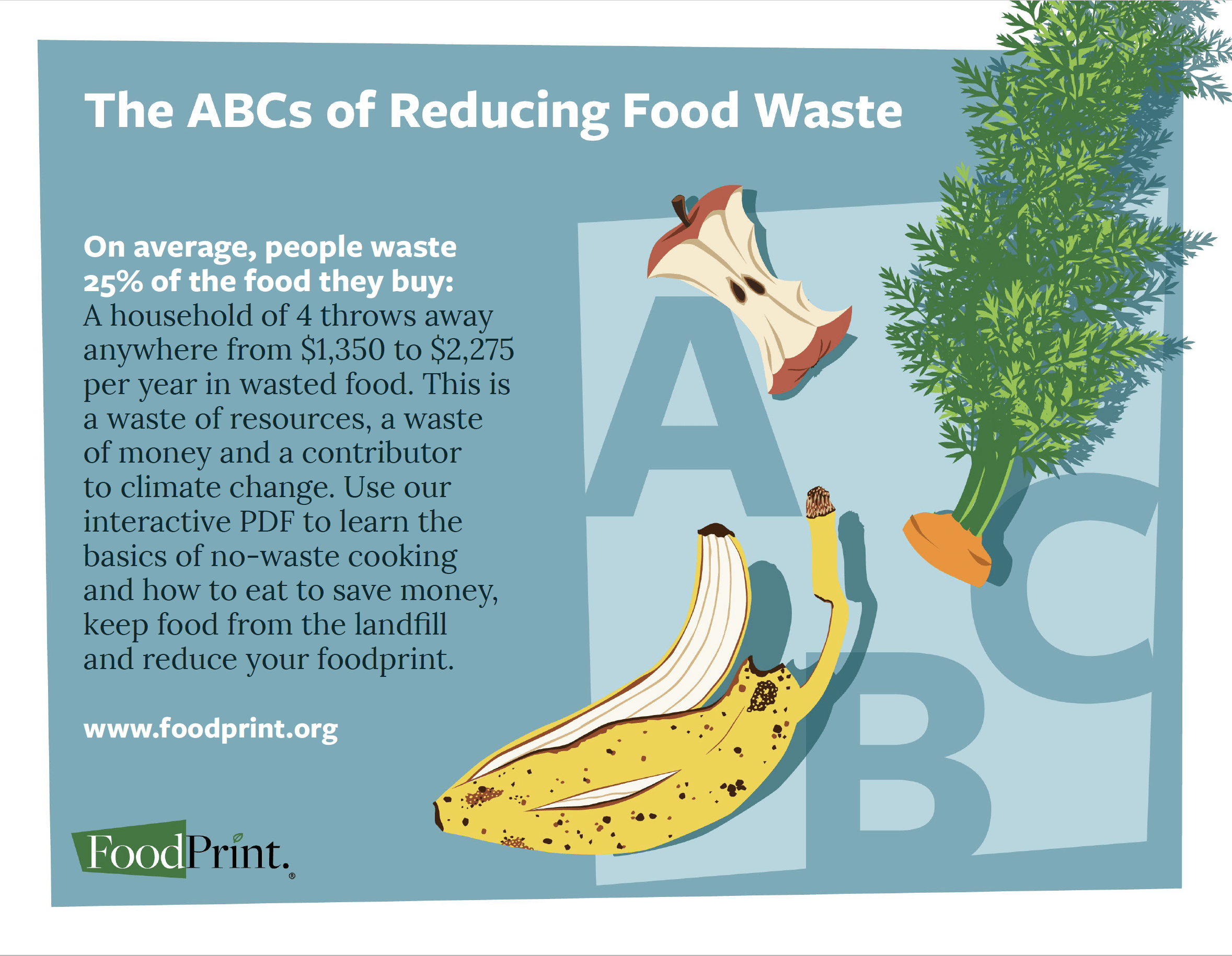The FoodPrint Guide to Reducing Food Waste
Food waste is an enormous problem in the US: America wastes roughly 40 percent of its food, which leads to pollution and other environmental damage, and is a waste of natural resources and a waste of money. While edible food is lost at every point along the food chain — on farms and fishing boats, during processing and distribution, in retail stores, in restaurants and more — as consumers, we are responsible for the largest percentage of all food waste. Approximately 40 to 50 percent of food waste in the US happens at the consumer level, and a typical US consumer wastes 238 pounds of food per year (21 percent of the food they buy), costing them $1,800 per year.
Along with the personal financial cost, that uneaten food leads to a waste of valuable resources, like water and farmland; wasted energy; wasted food packaging; and more. Wasted food ends up in landfills, where it emits methane, a powerful greenhouse gas that contributes to climate change, and food waste is among the leading causes of freshwater pollution.
So, the question is, how do we reduce food waste?
The answer might seem simple: don’t let food spoil, right? But food waste happens in a bunch of different ways: You go out to eat and don’t love the meal you ordered, leaving the majority on your plate to get scraped into the garbage. Or you pick up a bag of oranges, and forget about a few in the back of the fridge, where they turn mushy. You cut off the greens of carrots or beets, or peel root vegetables, and not realizing the potential use of these nutrition-packed scraps, you toss them in the trash.
Luckily, learning to reduce your food waste at home is as easy as learning your ABCs. To help you reduce your food waste and save money, we’ve gathered together all of our tips, tricks, recipes and resources in this three-page, interactive, visual guide: the ABCs of Reducing Food Waste. With beautiful illustrations and handy links, this all-in-one guide takes you all the way from meal planning to preserving — and to the compost pile, of course. Making smaller shopping trips; using leftovers; learning what date labels really mean; storing food properly; and using different preservation methods are all steps to help you cut back on food waste and lower your foodprint.
Ready to start saving food and cutting back on waste? Follow us on social media @FoodPrintOrg, ask questions and share pictures of your success. We can’t wait to see what changes you make.
Top photo by Luigi Bertello/Adobe Stock.
More Reading
9 homemade preserves to gift (or keep) this holiday season
December 12, 2023
Get creative with these food preservation methods
December 1, 2023
Food scholar Darra Goldstein on the culinary history of preservation
October 30, 2023
The FoodPrint Guide to Freezing
August 3, 2023
6 (Actually Good) Food Waste Ideas From Social Media
July 24, 2023
6 Recipes for Seasonal Drinks Inspired by Summer’s Bounty
June 28, 2023
Leftovers Become Luxurious With Help from “The Everlasting Meal Cookbook”
March 27, 2023
4 Tips for Stretching Your Food Dollars as Prices Continue to Rise
September 30, 2022
Can Legislation in the 2023 Farm Bill Help Tackle Food Waste??
June 15, 2022
Lean on Friends For Help Completing the Reduce Your Foodprint Challenge
January 12, 2022

